
Get 1+ GB FREE sound effects
BLACK WEEKS: Save up to 83% on sound libraries! Huge discount on the Everything Bundle!
BLACK WEEKS: Save up to 83%!
In the world of audio recording, there’s more to capturing sound than simply pressing the record button. Choosing the right microphone placement technique for your recording situation can significantly enhance the sound quality and deliver an engaging listening experience. This article dives deeper into the nuances of some widely used stereo recording techniques – ORTF, A/B, LCR, X-Y and MS – and offers insight into their advantages and disadvantages (if you want to learn more about microphones, read this article).
ORTF, named after the French broadcasting organization ‘Office de Radiodiffusion Télévision Française’, is a popular technique involving two cardioid microphones with their capsules placed 17cm apart at a 110-degree angle. This arrangement generates a broad stereo image and offers excellent localization of sound sources. ORTF gets the closest to human hearing. The distance between the capsules simulates the distance between the ears while the polar pattern of the capsules simulates the separation between the two signals.
This technique provides a wide stereo image and good localization of sound sources. However, it can result in a loss of low-frequency content due to the cardioid capsules and the positioning of the microphones can be challenging. You can use whatever capsule you want, but a standard cardioid is mostly the best choice. The smaller the polar pattern is, the more diversion you have from left to right, as their patterns cross each other less. I have seen people using shotgun mics in an ORTF setup for live recordings on stage, others have used omni capsules with ORTF pointed inside a grand piano to absorb as much sound as possible. The possibilities are big!
TIP: I normally would not recommend using an omni capsule for ambient recordings in an ORTF setup, because of their wide polar pattern. The panorama in the end will be more washy and not as precise and natural sounding like with a cardioid capsule.
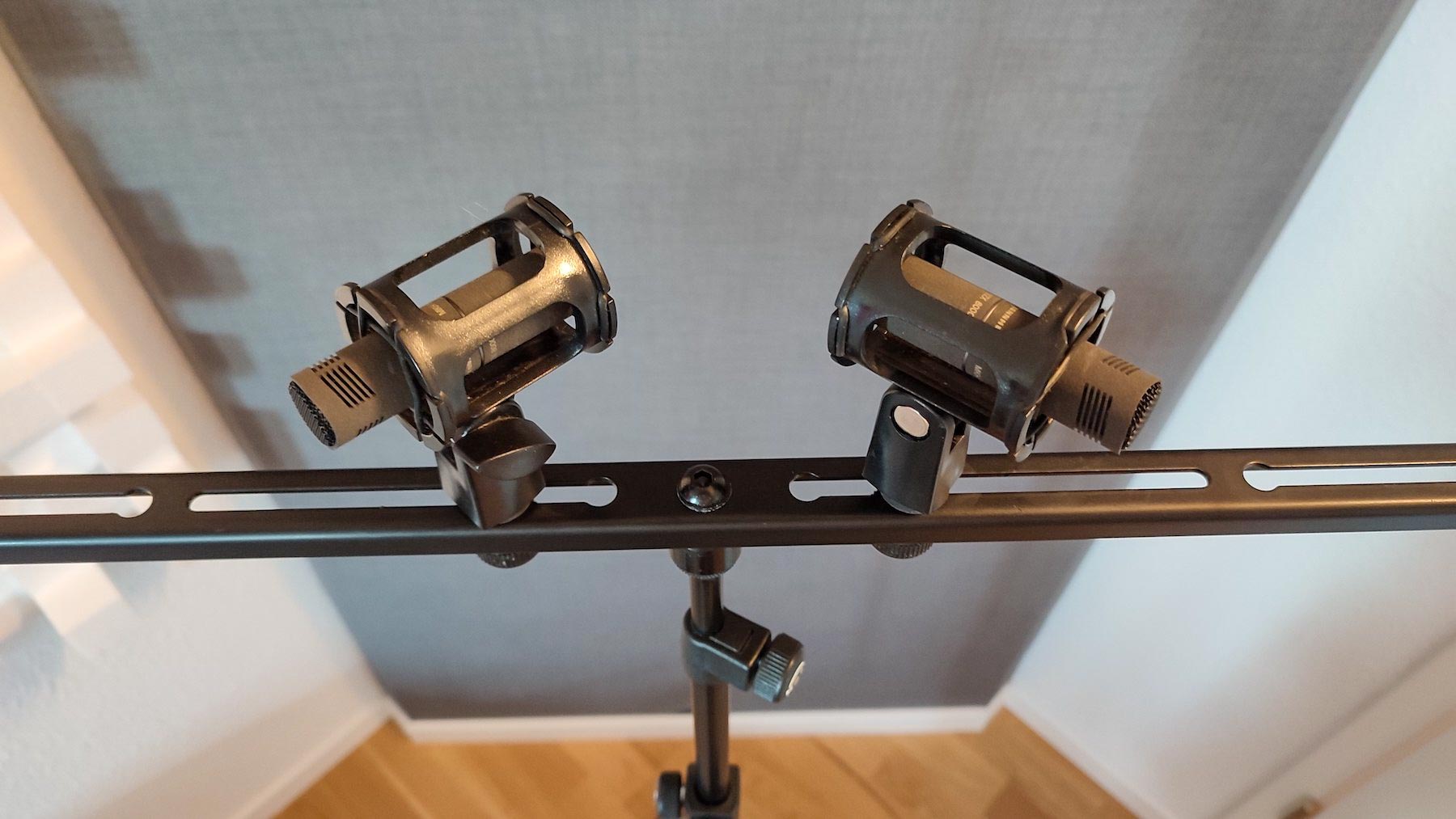
The A/B technique usually uses two omnidirectional microphones positioned several feet apart. This simple setup is advantageous for its spacious stereo image and the ease with which the stereo width can be adjusted by manipulating the distance between the microphones. Recording big impacts in a room with a lot of reverb is a good example where A/B becomes handy.
On the downside, the A/B technique may capture excessive room sound, depending on the acoustic properties of the space. Moreover, the resulting stereo image may lack the precision offered by other techniques, primarily because of the broad pickup pattern of omnidirectional mics.
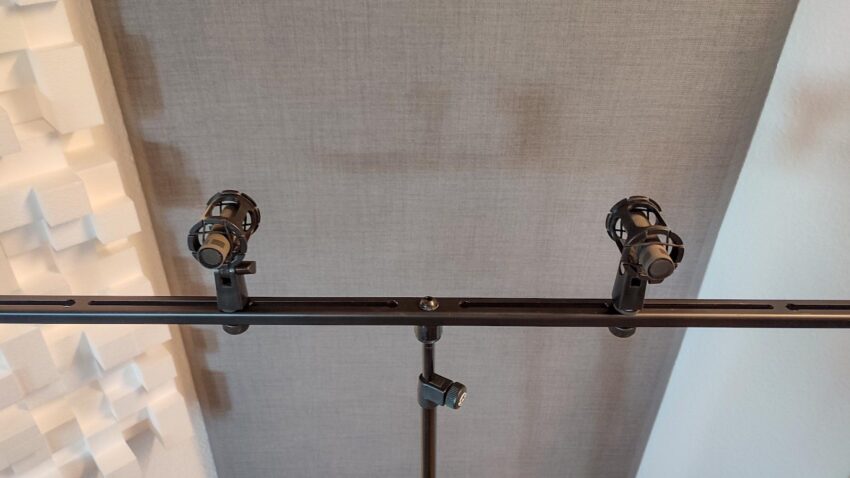
LCR is a multi-microphone technique that involves using three cardioid microphones arranged in a horizontal line, with the center microphone facing forward and the other two angled towards the sides. This technique provides a flexible stereo image with excellent center imaging. However, it requires precise microphone placement and can result in a loss of low-frequency content.
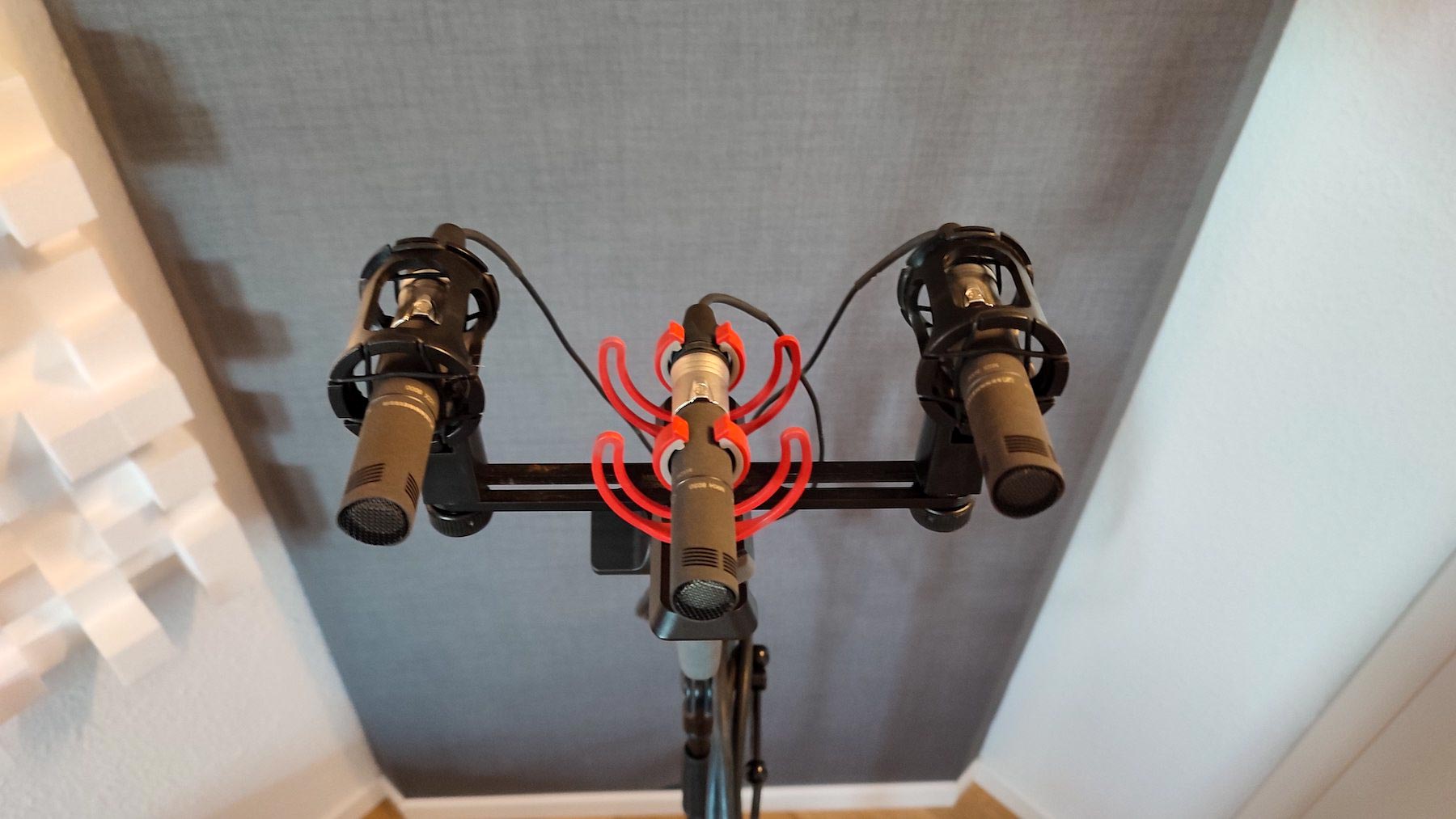
The X-Y technique involves placing two cardioid microphones at a 90-degree angle from each other, with the capsules as close as possible to each other. This technique provides a precise stereo image with excellent center imaging and is often used for recording live music and sound effects. The stereo image is more narrow and locating different instruments is more difficult. X-Y is useful for recording close to the source sounds (e.g. small hits, single acoustic instruments). However, it can result in a narrow stereo image and may require additional processing to create a wider soundstage. Also it is more difficult to hear where the instruments sit in an orchestra for example.
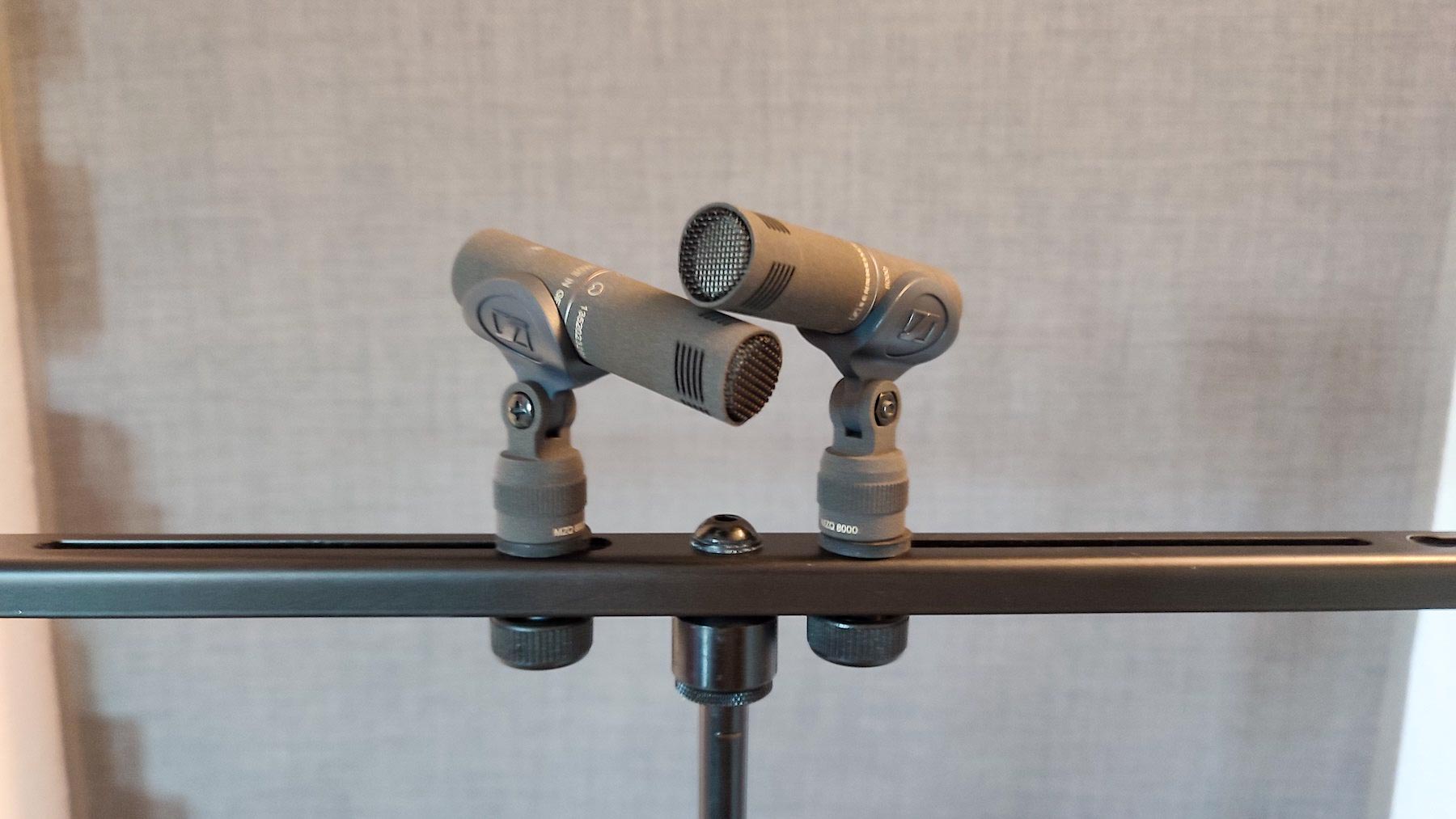
MS, short for Mid-Side, is a technique that uses two microphones: a cardioid pointed at the sound source (Mid) and a figure-8 microphone placed perpendicular to it (Side). The MS setup offers excellent control over the stereo width and center imaging, making it a go-to choice in film and television production.
One drawback of this technique is that it requires additional post-production processing to decode the stereo signal properly. Also, the figure-8 microphone, due to its bidirectional pickup pattern, may pick up unwanted sounds from the sides.
Choosing the right stereo recording technique is a critical aspect of the audio recording process. Each method offers unique characteristics that can profoundly impact the resulting audio, making the selection dependent on the specific recording situation and the desired sound characteristics. Knowledge and understanding of the strengths and weaknesses of each technique can guide you in making the right choice.
Experimentation is key in audio recording. So, don’t be afraid to try different techniques, even unconventional ones, to achieve the sound you’re after. Remember, there’s no absolute right or wrong choice and what works best heavily depends on the context of your recording.
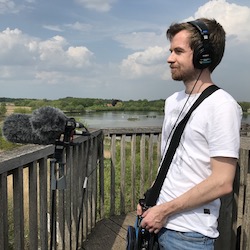
Jonas, co-founder of Just Sound Effects, is a graduated sound designer and captures field recordings all over the world, always looking for unique soundscapes and new places to explore.

All prices are net, additional VAT may apply.
By subscribing to our newsletter you agree to our privacy policy.

All prices are net, additional VAT may apply.
© 2025 JUST SOUND EFFECTS GbR – All rights reserved
By subscribing to our newsletter you agree to our privacy policy.